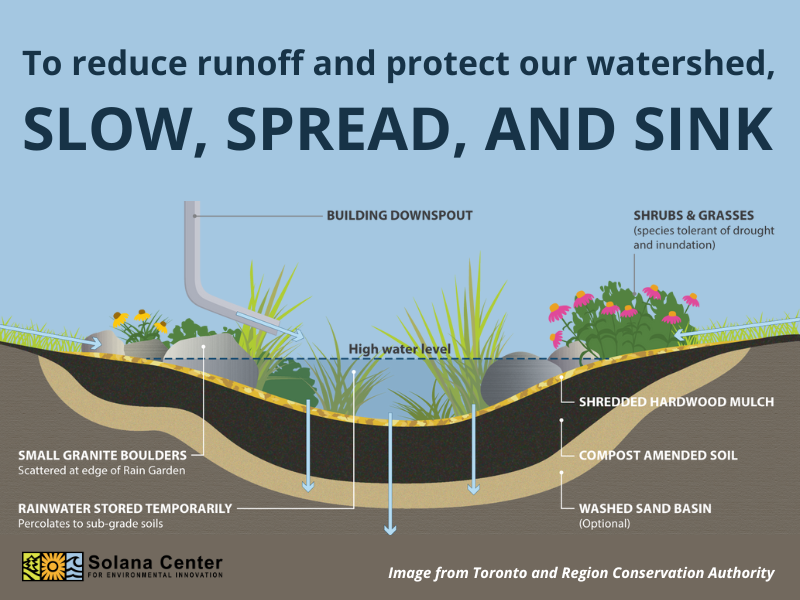From the Rotline: How Can I Slow, Spread, & Sink Water With Compacted Clay Soil?

Slowing, spreading, and sinking water are common strategies for gardeners looking to create water wise landscapes.
- Slowing can include collecting water in rain barrels and cisterns, keeping it from collecting pollutants and carrying those to the watershed.
- Spreading means digging swales, or shallow channels lined with rock and vegetation, that move rainwater along a sloping course, rather than its default path straight to the watershed.
- Sinking can be achieved by adding compost to increase your soil’s water retention, allowing more to be absorbed into the ground, and growing plants that can handle sporadically moist conditions. Leaves, branches, and low-growing vegetation all hold rainwater; that rainwater can nourish them, slowly permeate the soil below, or evaporate into the air.
Clay soil poses unique challenges when it comes to slowing, spreading, and sinking. When clay soil is very compacted, water pools on top and very slowly percolates into the ground. Luckily, there are some options to speed up the process!
One solution is to improve the aeration and texture of the soil, which allows water to leach through. It is recommended to amend the soil with gypsum, mulch and/or compost. To make sure the material does not float away, use chunkier mulch or compost socks to contain it. (We recommend these compost socks from San Pasqual Valley Soils. You can also purchase high-quality compost and mulch from SPVS and Miramar Greenery.) If large holes are dug and filled with organic materials, you will experience additional benefits because of the additional space for water to drain down into.
If the compacted soil is on a hillside or a slope, trenching contours and filling them with compost will encourage the water to sink down.
Looking for compost or supplies near you? Please check out the following links based on your location:
